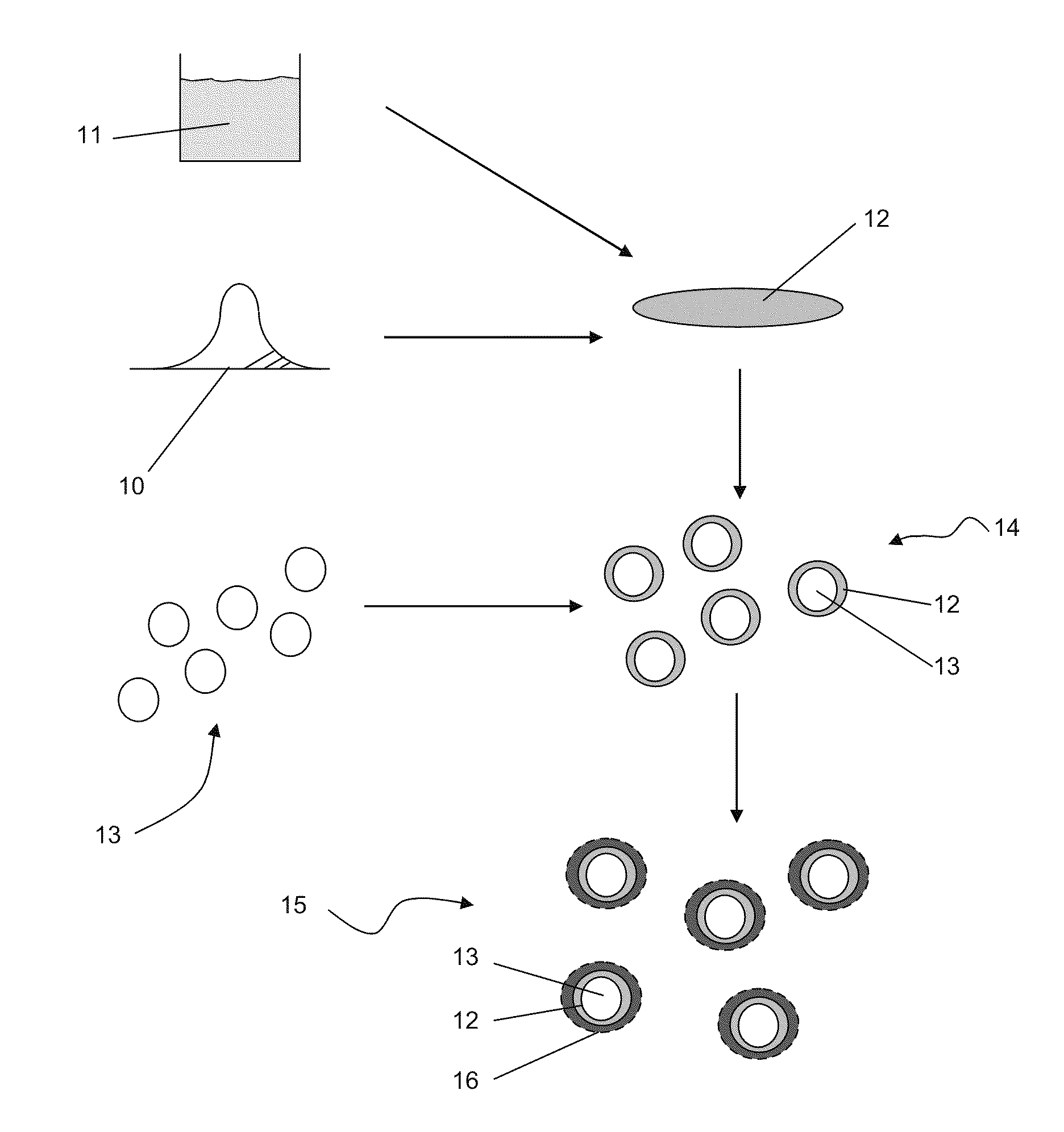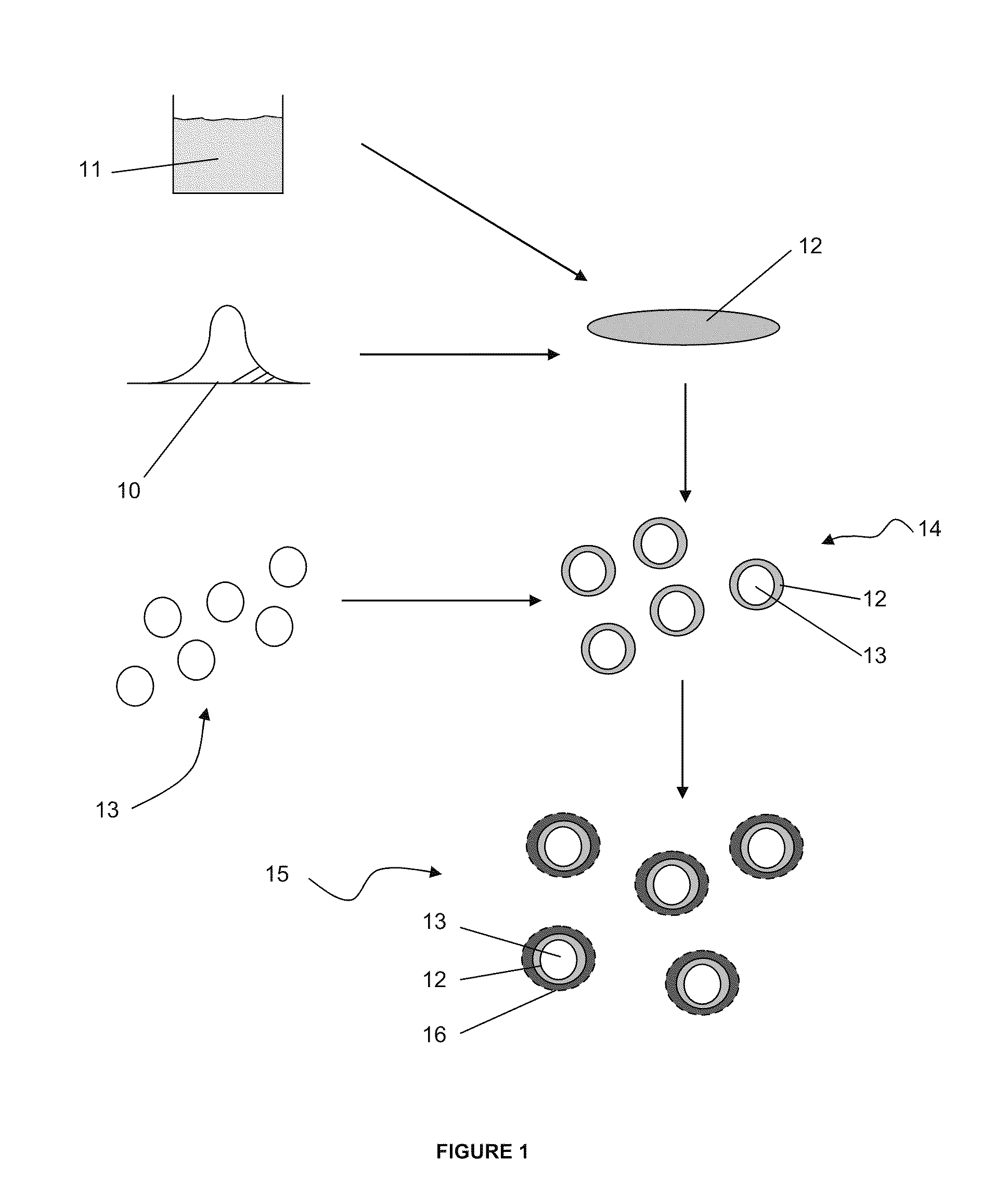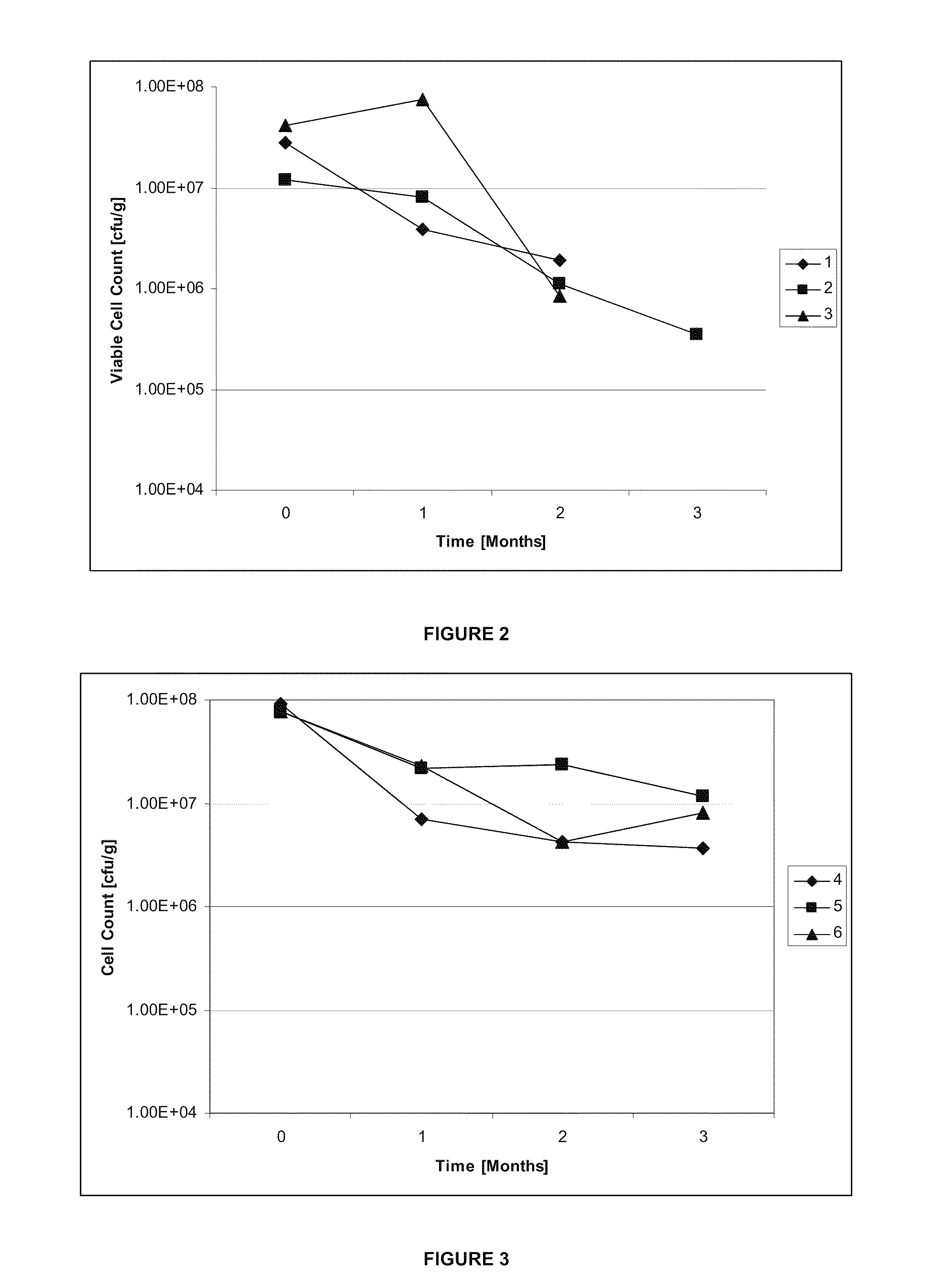Agent stabilisation process and product
a technology of stabilising process and product, applied in the direction of biocide, plant growth regulator, food preparation, etc., can solve the problems of inability to maintain biological materials in a viable condition during storage, not always addressing dispersion issues, and form homogeneous
- Summary
- Abstract
- Description
- Claims
- Application Information
AI Technical Summary
Benefits of technology
Problems solved by technology
Method used
Image
Examples
example 1
[0114]A general method of manufacturing the product of the present invention is described with reference to FIG. 1.
[0115]Initially mix dry and powdered gum (biopolymer) with oil at room temperature so that the mixture forms a coarse granular mixture 10.
[0116]Prepare an aqueous based concentrate of biological material 11 and mix this with the gum and oil mixture 10 to form a gel 12.
[0117]Optionally, allow the gel 12 to stand for 5-60 minutes.
[0118]Form a first coating on the substrate 13 with the gel 12 in one option by dipping the substrate 13 into the gel 12 to form a first coated substrate 14.
[0119]Subsequently add a second coat 16 to the first coated substrate 14 to form a double coated substrate 15.
[0120]As should be appreciated no oils or other agents are added in the above general method. The inventors have found that this basic process may be sufficient to stabilise the biological material. Oils and other substances may optionally be added and these are discussed further belo...
example 2
[0121]Various formulations are now described in Table 1 below being various combinations for producing the composition of the invention:
TABLE 1Composition CombinationsFormulationBiological2nd CoatingNumberSubstrateMaterialGumOilDesiccant(s)1Clover seed,RhizobiumXanthan,Salad andTalcVar. HuialeguminosarumLocustcooking oilBean2Clover seed,RhizobiumXanthan,Salad andTalcVar. HuialeguminosarumGuar,cooking oilLocustBean3Clover seed,RhizobiumXanthanSalad andTalcVar. Huialeguminosarumcooking oil4BranLactobacillusXanthan,Olive oilRice powderacidophilusGuar,LocustBean5BranLactobacillusLocustOlive oilRice powderacidophilusBean,Guar6BranLactobacillusXanthanCanola oilRice powder7BranBifidobacteriumXanthan,Olive oilRice powder,lactisGuar,and potatoLocuststarchBean8BranBifidobacteriumXanthan,Olive oilRice powder,lactisGuar,potato starchLocustBean9ZeoliteSerratiaXanthanSalad andBentonite andentomophilacooking oiltalc10ZeoliteBeauveriaXanthanNo oilBentonite andbassianiatalc11Carrot seedSerratiaXanth...
example 3
[0122]A detailed methodology is now described to produce Formulation 2 (and variations used to make Formulations 1 and 3):[0123](a) Rhizobium leguminosarum biovar trifolii (CC275e) was produced using a modified yeast malt extract broth and further processed to form a concentrate.[0124](b) 3 grams xanthan gum, 1 gram guar gum and 1 gram locust bean gum were mixed together.[0125](c) 0.5 grams of salad and cooking oil was then added to the gum mixture[0126](d) The mixture from step (c) was then combined with the concentrate of step (a) to form a gel.[0127](e) 2 grams of gel was coated onto 44 grams of white clover seed (variety Huia) and the gel and clover seed mixed to obtain a uniform coating on seed surface (a ‘first coating’).[0128](f) A second coating of 4 grams of talc (desiccant) was added to the first coated seed resulting in a single double coated flowable seed.[0129](g) Coated seeds were bagged in thick gas transferable bag (120 μm thickness) and stored.
[0130]The same methodo...
PUM
| Property | Measurement | Unit |
|---|---|---|
| thickness | aaaaa | aaaaa |
| particle size | aaaaa | aaaaa |
| thick | aaaaa | aaaaa |
Abstract
Description
Claims
Application Information
 Login to View More
Login to View More - R&D
- Intellectual Property
- Life Sciences
- Materials
- Tech Scout
- Unparalleled Data Quality
- Higher Quality Content
- 60% Fewer Hallucinations
Browse by: Latest US Patents, China's latest patents, Technical Efficacy Thesaurus, Application Domain, Technology Topic, Popular Technical Reports.
© 2025 PatSnap. All rights reserved.Legal|Privacy policy|Modern Slavery Act Transparency Statement|Sitemap|About US| Contact US: help@patsnap.com



